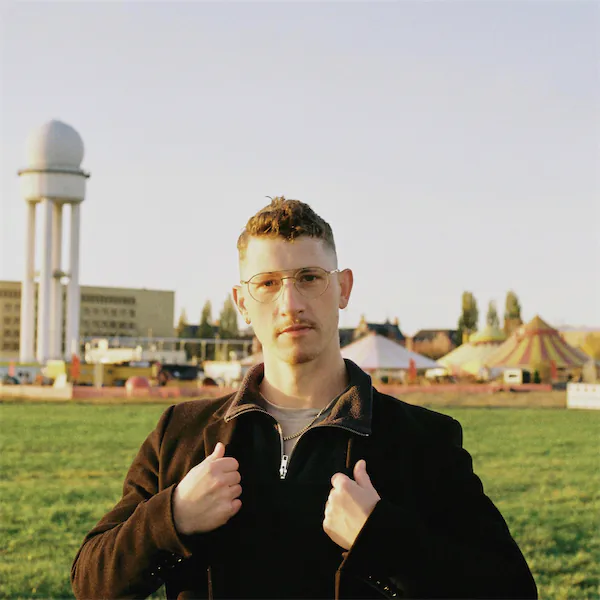On our day trip we will discover the many facets of Dresden. Often referred to as one of the most beautiful cities in Germany, Dresden has undergone major changes that continue to characterise both the cityscape and cultural life, making it an outstanding example of Germany's eventful history. A kingdom, an empire, a republic and two dictatorships have all left their mark. Our tour focuses on both continuity and renewal in order to understand the shifts and changes caused by the city's history.
To get a first impression of Dresden and its self-image, we find it essential to look at the Old Town from a distance and up close. The splendid silhouette as well as the ornate squares help us understand how Dresden acquired its reputation as the ‘Florence on the Elbe’; a title that is not only due to the city's extensive art collections, but also to the richness of its architecture. Sights such as the opera house designed by Gottfried Semper (1871-78) and its forecourt, the neighbouring Residential Palace (15th century) and the Zwinger Palace (18th century) are obligatory, as is the Neumarkt, a largely reconstructed area crowned by the Frauenkirche, which was rebuilt at the beginning of this millennium.
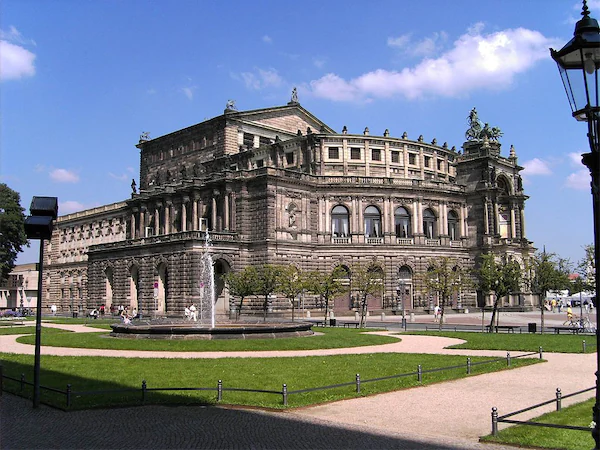
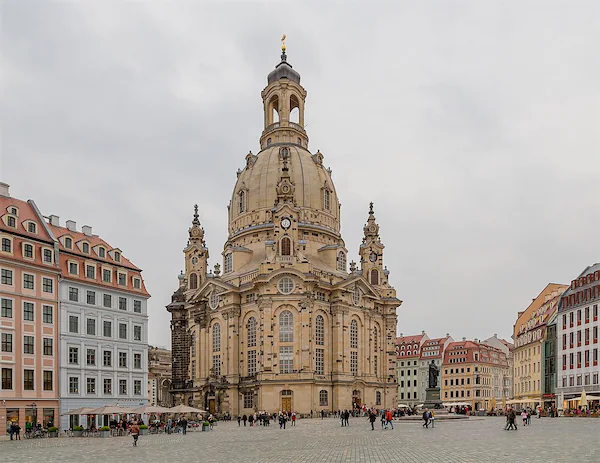
We are particularly interested in the historic backdrop itself, which is rich in monuments: We understand that the loss of the city centre during the devastating air raids in February 1945 was so painful for the people of Dresden that the Neumarkt has been rebuilt for over twenty years with more than sixty facades faithfully reconstructed. What is the relationship between architecture and authenticity? We are delighted that the reconstruction of the central Frauenkirche has not only restored the heart of the city, but also one of the outstanding works of Baroque architecture. The round church designed by George Bähr (1726-43) demonstrates the perfect transition from the architectural vocabulary reintroduced during the Renaissance to the confident and opulent formal language of the Baroque.
A different approach to the architectural heritage can be seen in the German Hygiene Museum. Designed for this purpose by Wilhelm Kreis and opened in 1930, the building itself is a mixture of neoclassicism and Bauhaus style. Not only the mixture of styles, also known to us as reform architecture, but also the building itself was hijacked by the Nazis: Not merely to spread tasteless racial propaganda, but also to provide a centre for the planned urban redevelopment: The Hygiene Museum was to become the centre of a so-called Gauforum, which we can imagine as a fascist Forum Romanum. What predestined such a modernist building to be annexed by the Nazis? How did the people of Dresden rehabilitate the imposing building?
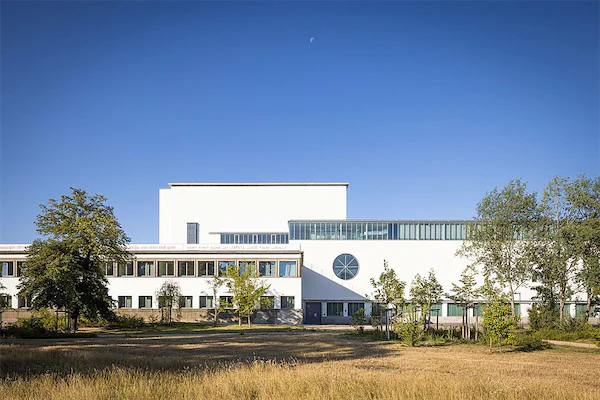
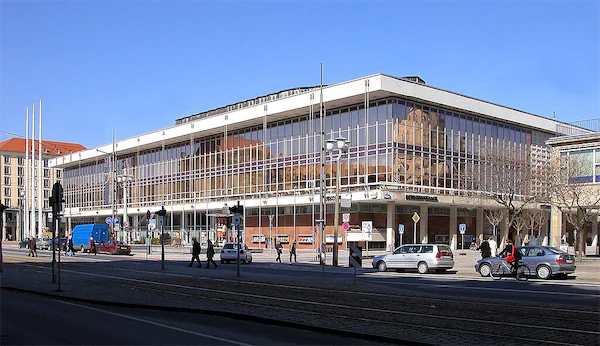
With two of the most striking buildings erected during the GDR era, we can witness not only a change of style but also of scale within walking distance; the Kulturpalast (1969, Wolfgang Jänisch) and the Rundkino (1972, Alfred Fasold and Winfried Sziegoleit) are bold examples of the revitalisation through new construction of the city centre after the war, which lay in ruins. Together, the cinema and the concert and event hall formed the centre of Dresden's cultural life around Prager Straße. We perceive the new planning of the city centre as an outstanding example of socialist urban development.
After lunch, we discover the city's treasuries; firstly to admire their beauty and secondly to gain a deeper understanding of the city's pride, which ultimately earned it the nickname Florence on the Elbe. The Semper Gallery(1847-54), another of Semper's architectural masterpieces, houses the Old Masters. As one of the most renowned galleries in the world with a collection of around 750 paintings, it is crowned by Flemish stars such as Rembrandt and Vermeer as well as the Italian masters Giorgione, Tiziano and Rafael. The works of the New Masters are exhibited in the Albertinum, the city's former armoury (1884-87). It is considered one of the most important museums for modern painting in Germany.
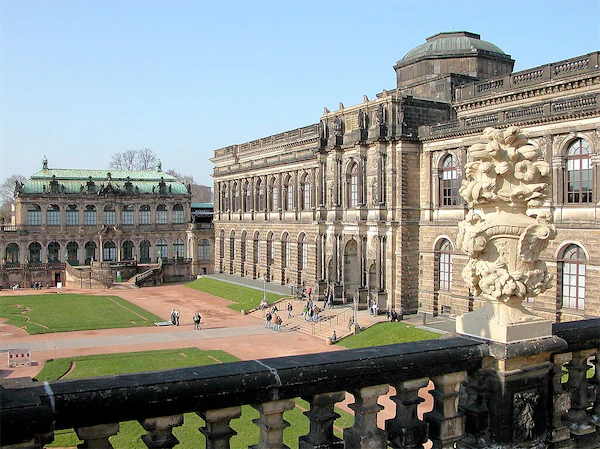

We leave the historic city centre behind us, cross the Elbe river and make our way through Dresden's Neustadt district, which, as it turns out, is not so new at all, but one of the largest and best-preserved Wilhelminian-style districts in Germany. It is therefore older in its entirety than the reconstructed old town on the other side of the riverbank. To the north of this rather popular neighbourhood is an eye-catching architectural sculpture that deals with the renewal of Dresden after the great bombing. For the Military History Museum (2004-11), the Jewish-American architect Daniel Libeskind incorporated a deliberately disruptive element in the former armoury, like a shard that can be read as a symbol of the struggles to heal the city's huge wound. The structure also offers a marvellous view of Dresden just before we leave the city.
Hellerau was founded in 1909 and was the first garden city in Germany to be based on the ideals of the life reformer Ebenzer Howard. The outstanding ensemble consists of numerous projects by such renowned architects as Richard Riemerschmid, Hermann Muthesius and Heinrich Tessenow; the latter is responsible for Hellerau's main building: the festival theatre, which opened in 1911, is today an icon of the reform architecture movement. Hellerau offers us a unique example of how architects sought not only to advance their discipline and ascribe a new role to it, but also to change society through architecture. Having seen other examples of similar ideological approaches, we can complete our timeline of the intellectual changes that were visible through architecture.
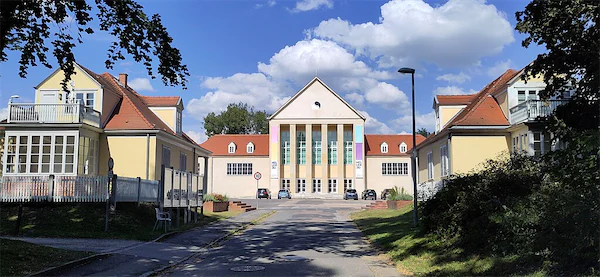

In the evening, we dine at the Ball- und Brauhaus Watzke, which has been one of the city's favourite entertainment venues for over a century and is housed in a historicist fin-de-siècle palace. After beer and home cooking, we bid farewell to Dresden, leaving both mentally and culinarily nourished.
